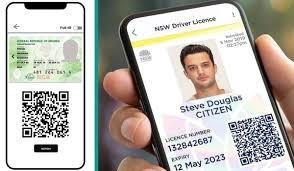From Photoshop to Print: How Fake ID Templates Are Used and Misused

In today’s digital age, creating and using fake IDs has become increasingly simple, thanks to advanced design tools like Adobe Photoshop. Fake ID templates, which can be easily customized and printed, are frequently used to bypass age restrictions, gain access to restricted services, or even commit fraud. These templates have made it easier for individuals to produce counterfeit identification documents that mimic government-issued IDs with remarkable accuracy. This article explores how fake ID templates are made, how they are misused, and the consequences of their use in the digital era.
How Fake ID Templates Are Created
Creating a fake ID template typically begins with design software like Photoshop, which allows for precise control over every element of an ID. The process usually starts with gathering high-quality images of legitimate IDs as reference materials. Once the reference material is obtained, designers replicate the visual aspects of the ID, including fonts, logos, and security features like holograms and watermarks.
With these elements in place, the template is designed in layers, allowing easy editing for users. These layers can include spaces for inserting a photo, name, birthdate, address, and other identifying details. Some advanced templates even incorporate simulated security features such as barcodes and digital chips, which make the ID appear more legitimate.
In addition to design software, high-resolution printers are necessary to bring the fake ID from the screen to physical form. Printers capable of using PVC cards, which are the same material as real IDs, are often employed to achieve a more authentic-looking result. The final product, once printed, can closely resemble an actual government-issued ID.
The Many Ways Fake ID Templates Are Misused
The primary misuse of fake ID templates lies in their ability to bypass laws and regulations that restrict access to certain services. Some of the most common ways fake IDs are misused include:
-
Underage Drinking and Smoking: Fake IDs are often used by underage individuals trying to access alcohol or tobacco products. With these IDs, young people can deceive retailers, bars, and clubs into selling them restricted items.
-
Accessing Restricted Venues: Fake IDs are frequently used to gain entry to exclusive or age-restricted events, such as nightclubs, concerts, or adult entertainment venues.
-
Fraudulent Online Activities: Fake IDs are sometimes used to create fake online profiles, apply for loans, or commit identity theft. The availability of digital templates makes it easier for criminals to engage in fraud without the need for physical ID verification.
-
Avoiding Legal or Financial Restrictions: Some individuals may use fake IDs to evade legal constraints, such as skipping fines or avoiding certain criminal charges, while others might use them to access financial services, like bank accounts, under a false identity.
The Legal and Ethical Risks of Fake ID Use
Using, creating, or selling fake IDs is illegal in many jurisdictions. Depending on the severity of the offense, the legal consequences can include hefty fines, imprisonment, or both. In the United States, for example, it is a federal crime to possess or manufacture fake identification documents. The legal risks are even higher for those involved in selling fake ID templates or using them to commit fraud.
Beyond the legal risks, there are significant ethical concerns surrounding the use of fake IDs. Fake IDs can be used to facilitate harmful activities like underage drinking, which can have long-term health consequences for young people. They also undermine the integrity of systems designed to protect public safety, such as age verification for alcohol sales or secure online banking.
How Technology Is Helping Combat Fake IDs
As fake ID creation has become easier, so has the effort to combat counterfeit identification. Many government agencies and businesses now use advanced technologies to detect fake IDs. This includes the use of biometric verification, QR codes, and holograms that are nearly impossible to replicate with common design tools.
Moreover, some financial institutions and retail outlets use artificial intelligence and machine learning to spot fake IDs. These technologies can detect minute discrepancies in fonts, colors, or patterns that may indicate a fraudulent document. As counterfeiters continue to advance their techniques, the battle between fake ID creators and ID verifiers is becoming a digital arms race.
While the creation of fake ID templates https://fakeidtemplates.org/ may seem like a harmless way to experiment with design skills, the real-world implications are far more serious. The accessibility and sophistication of these templates make it easier for individuals to engage in illegal activities and bypass crucial age and identity verification systems. As technology continues to evolve, both the creation of fake IDs and the detection of such fraudulent documents will likely become even more advanced.
For now, it’s important for businesses, government agencies, and consumers to stay vigilant and aware of the risks posed by counterfeit IDs. Understanding the tools and trends behind fake ID templates is an essential step in protecting the integrity of identity verification systems and maintaining trust in legal processes.






